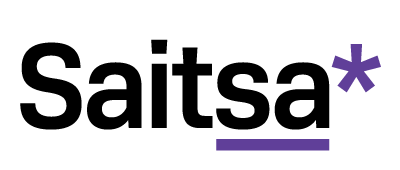Student Support

Hello, I'm
Dakota Rickman
Your Student Support &
Community Conduct Coordinator
My mission is to stand with SAIT students, guiding and empowering them through the (non)academic misconduct process. I am deeply committed to enhancing student wellness and fostering a culture of self-advocacy on campus.
To achieve this mission, I help you in navigating academic and non-academic self-advocacy. This also involves helping you understand your student rights and expectations regarding community conduct. I provide support regarding misconduct allegations, and can also attend your hearing or appeal as a Saitsa representative. If you see me around on campus, please don’t hesitate to say hello!
Questions? Comments?
Fill Out this form
More About Me
As a graduate of the University of Calgary's faculty of Social Work, I've worked on the frontline with diverse, vulnerable populations, applying a Strength-Based Anti-Oppressive Approach through an Intersectional lens. I believe in empowering you to help support you in recognizing your inner strength and kickstart the seed of change from within.
My proudest achievement is completing an international psychology internship in Thailand and living abroad for half a year. When I'm not on campus, you can find me at home with my ducks, chickens, cats, and dogs!
Academic Integrity Resources & Tools
What is Academic Integrity?
Academic integrity is a core value at Saitsa, embracing principles like fairness, integrity, respect, and transparency. It's about being honest and responsible in our academic work. For students and staff alike, adhering to these principles ensures that education is a trustworthy and meaningful experience. By focusing on academic integrity, we create a supportive and genuine learning environment for all.
What is Plagiarism?
Plagiarism, as defined by SAIT's AC 3.4.3 Student Academic Conduct, occurs when a student presents ideas or words from an external source as their own without proper referencing or citation. When the original source isn't acknowledged, it's as if someone else's work is being claimed as your own. Plagiarism can be either intentional or unintentional, and it can take various forms.
Common Examples of Plagiarism
These are just a few examples of plagiarism.
Refer to SAIT’s Academic Conduct Schedule for more examples.
Using Someone Else's Work Without Credit
If you use someone else's words or ideas without proper citation, it's considered plagiarism. This includes failing to acknowledge a classmate's contribution or presenting someone else's work as your own, whether intentionally or unintentionally.
Reusing Your Past Work
Submitting the same or similar work for multiple assignments without permission is also a form of plagiarism. You must consult all involved instructors if you plan to reuse past assignments or present old work as new.
Citation Errors
Creating a reference list but failing to include corresponding in-text citations can lead to misunderstandings. It's crucial to avoid mismatches between cited sources in the text and those listed in the references, and to ensure that citations are accurate and complete.
Inappropriate Collaboration
Working with classmates on an assignment meant to be done individually can be considered plagiarism. Sharing answers on projects where independent work is expected, or collaborating on a lab or project without clear guidelines, can lead to identical submissions and violate academic integrity.
How do you prevent plagiarism?
Paraphrasing
Don't just copy and paste. Take the essence of the original source and use your own words to express it.
Example
"With great power comes great responsibility."
- Spider-Man
Paraphrase:
Having significant strength means you also have substantial obligations.
Utilizing Direct Quotes
Sometimes, the original wording is best (like in the Spider-Man example above). If you need to quote something exactly, make sure to cite it properly.
Example
Albert Einstein once said: "The only thing that interferes with my learning is my education"
Citing Properly
Become adept at the correct citation format for your program, such as APA or MLA. Correct citation adds credibility and acknowledges the original authors' work.
Use a Plagiarism Detector
Writing a paper on the cultural impact of hip-hop? Run it through a plagiarism tool like Turnitin after quoting lyrics from a famous artist like Kendrick Lamar or Beyoncé.
Understanding Citations
What are Citations?
A citation within the text helps readers identify the original idea or source, providing credit where it's due. In-text citations indicate that a particular concept is not your original thought but comes from an external source. At the end of your work, a reference list offers readers the full details about the sources, allowing them to find and examine the original material.
Rules and Formats
Different programs may require various citation styles, so it's vital to consult with your program and instructor on the specific referencing style you should use. Common styles include APA, MLA, and Chicago.
For comprehensive guidance on proper citation, refer to SAIT's citation resources here or Purdue OWL.
APA in-text citation typically includes the author's last name, year of publication, and page number, while MLA requires only the author's last name and page number.
Why Citing Sources is Essential
Citing your sources is important for various reasons.
Reg Ehardt Library – SAIT (2023) says that the importance behind citation is to:
i) Help assist in identifying and locating where the original source comes from.
ii) Show evidence that the position you are taking is well-informed and researched.
iii) Give credit to those that originally came up with the ideas that you are using and taking inspiration from.
Reference: Reg Erhardt Library – SAIT. 2023. “APA Citation style: Start here.” Retrieved June 14th, 2023 (https://libguides.sait.ca/apa)
Plagiarism vs Citations
Plagiarism is a word that has its origins rooted in Greek, which refers to the term as meaning “kidnapping” (University of the Fraser Valley Academic Success Centre, n.d.). Plagiarism indicates that someone has intentionally taken someone else’s ideas without acknowledgement and is using them as their own.
Citation refers to acknowledging an idea that is presented that is not your own. Citation involves giving recognition where it is due to the original source from which you used. One way of thinking about it is plagiarism is akin to intentional theft, whereas if you make a citation mistake it is simply a mistake (University of The Fraser Valley Academic Success Centre, n.d.).
Plagiarism has been described in modern times as “literary theft “(Parks, 2003 as cited in Eaton, 2021) whereas citation is acknowledging an idea or thought isn’t your own while also contributing towards further academic discussion.
Reference: University of the Fraser Valley Academic Success Centre. (n.d.). Plagiarism versus Citation. https://www.ufv.ca/media/assets/academic-success-centre/handouts/Plagiarism-versus-Citation-rev2018.pdf
Eaton, S. E. (2021). Plagiarism in higher education: Tackling tough topics in academic integrity. Libraries Unlimited.
Ethics Test
As you are working on your assignments and exams (or any other kind of learning assessment that your instructor gives you), apply these four ethical tests:
1) Gut Feeling:
Is your gut telling you that the action you are about to take is indeed an ethical one?
2) Values Test:
Does your action indicate that you have integrated the values of honesty, respect, responsibility, trustworthiness, fairness, and courage into them?
3) Standards Test:
Do your actions uphold the policies outlined here:
4) Exposure Test:
If your instructor, parent(s), or the Office of Community Conduct were exposed to the action, would you be alright with that?
If you answer “NO” to any of the questions, then you might be about to make an unethical choice and should rethink about whether you should go through with this action or not.
Reference: Tools & Resources. MacEwan University. (n.d.). https://www.macewan.ca/campus-life/academic-integrity/tools-resources/
Student Support Documents
Academic Misconduct
Academic Misconduct Overview
Grades & Courses
SAIT Resource
Office of the Ombudsperson
After years of advocating, Saitsa is pleased to highlight the “Office of the Ombudsperson” at SAIT, a valuable resource designed to assist students with both academic and non-academic challenges, including allegations, hearings, and appeals.

